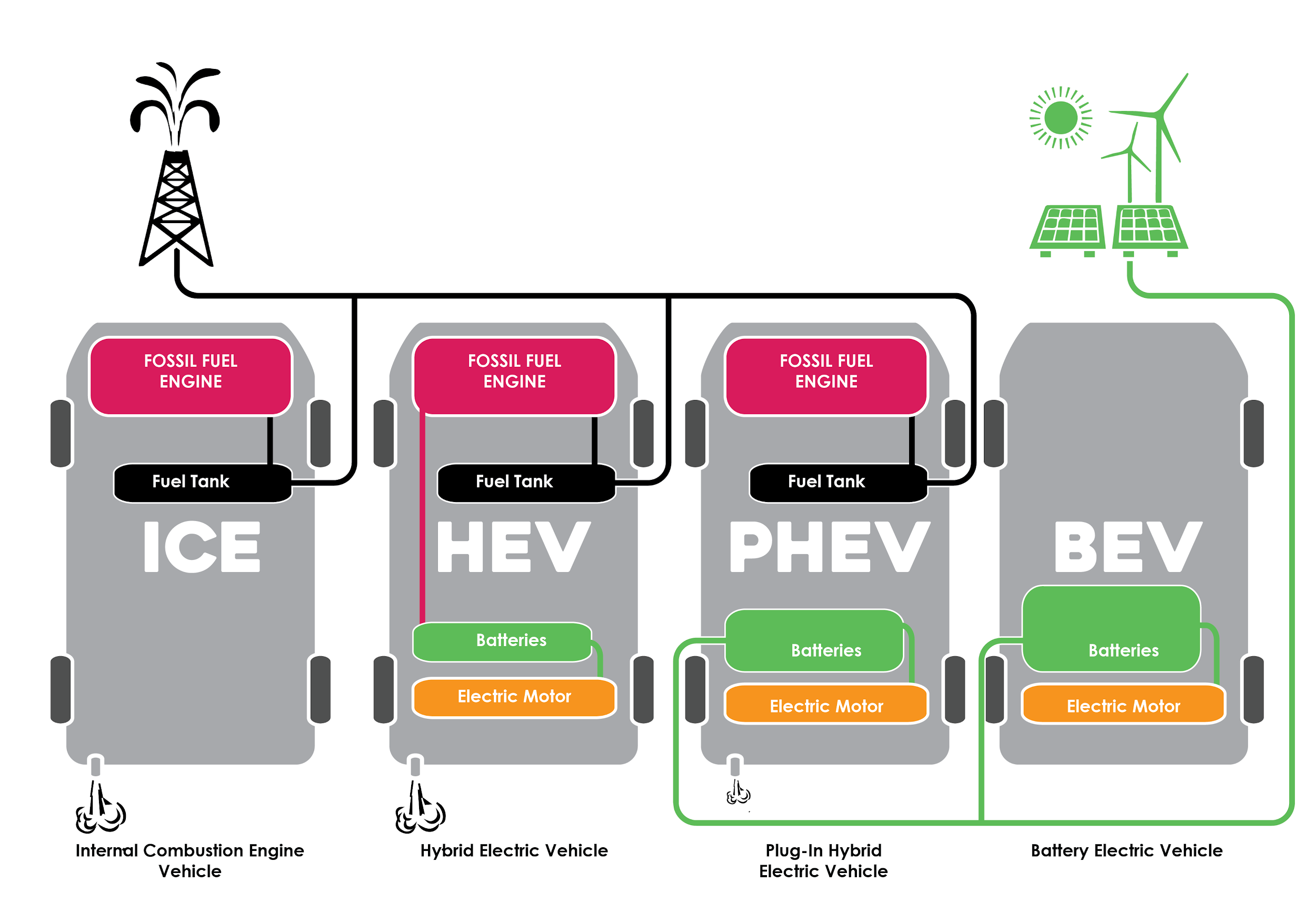What is an EV?
Open all sections
Close all sections
– Overview
Electric vehicles (EVs) are cars that move by using electricity to power an electric motor.
The three key benefits driving EV provides are:

Cheaper running costs.

Independence from fuel companies and petrol prices.

A lower environmental impact.
In New Zealand, an EV is defined as
a vehicle that must plug-in to an external source of electricity
.
This is explained in further detail by the NZTA and EECA in the point below.
EECA’s definition
:
“PEVs are vehicles that use an on-board battery to store energy supplied from an external source”
Technically, this means that an EV can also sometimes use petrol.
Depending on how politically correct or EV-enthusiastic the person you
are talking to is, “electric vehicle” can mean either a car that uses
only electricity, or a car that uses both electricity and petrol.
When we talk about EVs in this guide,
we exclusively mean 100% electric
cars, no petrol or diesel
, unless stated otherwise.
– Comparing electric vehicles
– ICE vs HEV vs PHEV vs BEV overview
Put simply, ICEs, HEVs and PHEVs use fossil fuels, a BEV does not.

– Internal combustion engine (ICE) vehicle
These are vehicles whose engines only burn fossil fuels like diesel and petrol.
The term “ICEd” is commonly used when an EV charging station is blocked by
a petrol or diesel vehicle.
– Hybrid electrified vehicles (HEV)
A HEV combines a petrol-powered engine with an electric motor and a small
battery to improve the vehicle’s fuel efficiency.
A HEV does not have a plug. Its battery can only be charged when the vehicle’s
brakes are used.
A full battery will normally last for 1 to 5km of driving.
“Self-charging” is a marketing term often used to refer to hybrid vehicles (HEVs).
When a car manufacturer refers to their car as “self-charging,” they’re either
talking about the regenerative braking system, which recaptures energy when
the car brakes, or about using fuel in the car’s tank to charge the battery.
Unless it is covered in solar panels, a “self-charging” car is usually just
a cunningly marketed hybrid.
– Plug-in hybrid EV (PHEV)
A PHEV will do much of its driving using an electric motor and a medium to
large-sized battery (usually good for about 10 to 50km of driving) that can be
recharged through the vehicle’s brakes or by plugging it in.
When the battery is low, the vehicle will switch to using its petrol-powered
engine instead.
– Battery electric vehicle (BEV)
A BEV (or, colloquially, just EV) does not use fossil fuels. Instead it uses
energy stored in a large battery to power an electric motor.
A BEV can be fully recharged by plugging in and it also generates energy when
the brakes are applied via regenerative braking.
– Range-extended EV (EV-Rex)
These are BEVs that have been fitted with a small, on-board petrol or diesel generator.
When the generator is turned on it can recharge the battery while driving
in order to extend the vehicle’s range.
– Hydrogen-powered vehicles
In hydrogen vehicles, hydrogen is either burned in a combustion engine, or reacted
with oxygen in a fuel cell to generate electricity and power an electric motor.
Vehicles that run on hydrogen are slowly becoming publicly available, like
the Toyota Mirai and the Hyundai Nexo. However, they are not yet on sale
in New Zealand and there are currently no commercial hydrogen refuelling
stations in New Zealand.
Benefits of using hydrogen in cars:

Hydrogen vehicles can be refilled quickly at a commercial station,
the same way a petrol car can be refilled.

They can also drive similar distances to long range EVs between stops
and they produce only water as exhaust.

They provide a potential way for oil and gas companies to maintain
their business models, while becoming more environmentally friendly.
Downsides of using hydrogen in cars:

Most hydrogen produced in NZ is made from natural gas (CH4). This is
the cheapest way to make hydrogen, but it also releases CO2 into the air.

There are no public hydrogen refuelling stations available in New Zealand
and they cost up to US$2 million to build.

Hydrogen is expensive. It is currently sold for US$12 to US$16
(NZ$20 to NZ$25) per kg and a typical full tank holds 5 to 7kg.

Hydrogen gas corrodes many of the metals used in petrol and gas pipes,
so an entirely new system of supply pipelines would likely need to be built.
For more detailed comparisons between hydrogen and electric vehicles,
you could read the
hydrogen section of the NZ EV guide
.
For more in-depth and technical information on hydrogen and New Zealand,
you could consider reading Concept Consulting’s 3-part report on New Zealand’s hydrogen future: